#Sudarshana
Explore tagged Tumblr posts
Text

Sudarshana Chakra depicted as Chakratalvar who is an ayudhapurusha and a fierce aspect of his owner Vishnu
#Vishnu#Chakratalvar#Sudarshana#Chakra#hinduism#symbols#library#old books#illustrations#hindi#gods#sacred
1 note
·
View note
Photo



#Radio Garage#Fuzzter#Podrido#Necrocracia#Lima Noise Underground#Pus#Fujimoris Muertos#Kuerux Negrx#Troy Mcclure#Adictiva#Fukuyama#post-hardcore#Hardcore Crust#punk rock#hardcore trash#trash metal#Now or ever#El Perineo#Sudarshana#Paroximia#Reflections#Decisión Final#Tomar Control#Indie Hardcore#skate punk
3 notes
·
View notes
Photo

#hindugod #sudarshan #mahasudarshana #sudarshana #sudarshanahomam #sudarshanachakra #meditationmantra #meditation #homamandpoojaservice https://www.instagram.com/p/Cm6vJyvSE5d/?igshid=NGJjMDIxMWI=
#hindugod#sudarshan#mahasudarshana#sudarshana#sudarshanahomam#sudarshanachakra#meditationmantra#meditation#homamandpoojaservice
0 notes
Text
#rudra puja talks#purusha sukta#astrologer in bangalore near me#katyayini#sudarshana homa#mrityunjaya homam price#ask astrologer about marriage#pandit online bangalore#book pandit online bangalore#online pandit bangalore#pandit near me#online pandit near me#online pandit in bangalore#best astrologer in bangalore online#purush shukt#name numerology for business#business numerology#numerology for business#indian astrology expert#online jyotish for marriage#numerology shop name#business name numerology#numerology name for business#numerology for company name#numerology company name#numerology business name#numerology for business name#company name numerology#numerology for business names calculator#puja service
10 notes
·
View notes
Text

#Sudarshan chakra yantra benefits#sudarshan yantra benefits#sudarshana yantra benefits#maha sudarshan yantra benefits#shri sudarshan yantra#sri sudarshana yantra
0 notes
Video
youtube
Laxmi Prapti Sudarshana Maha Mantra #Mathangi
#youtube#Laxmi Prapti Sudarshana Maha Mantra#Laxmi Prapti Sudarshana Maha MantraMathangisudarshana mantra for healthsudarshana mantra 108 timeslakshmi mantra for healthlaxmi prapti suda
0 notes
Video
youtube
కృష్ణుడి తరువాత సుదర్శన చక్రం ఏమైంది? | What happened to Sudarshan Chakra after Lord Krishna?
#youtube#Sudarshan Chakra after Lord Krishna#voice of maheedhar#maheedhar planet leaf#sudarshan chakra#krishna sudarshan chakra#where is sudarshan chakra#krishna#what happened to sudarshan chakra after lord krishna?#sudarshan chakra story#sudarshana chakra#who gave sudarshan chakra to krishna#sudarshana chakra after krishna#vishnu sudarshan chakra#what happened to sudarshan chakra after mahabharata#sudarshan chakra mantra#sudarshana chakra mantra#about sudarshan chakra#story of sudarshan chakra#sri krishna sudarshan chakra
0 notes
Text
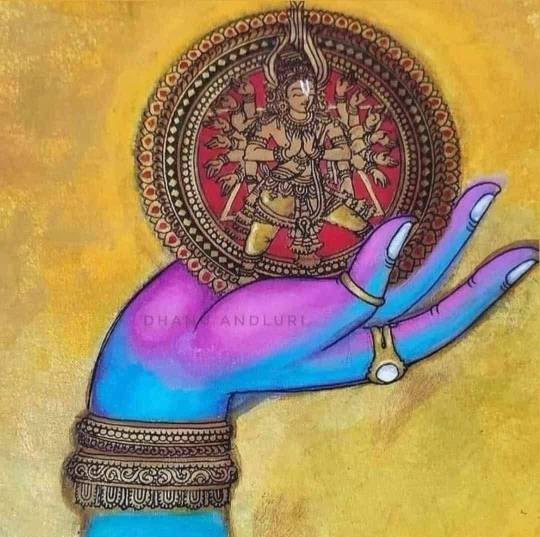
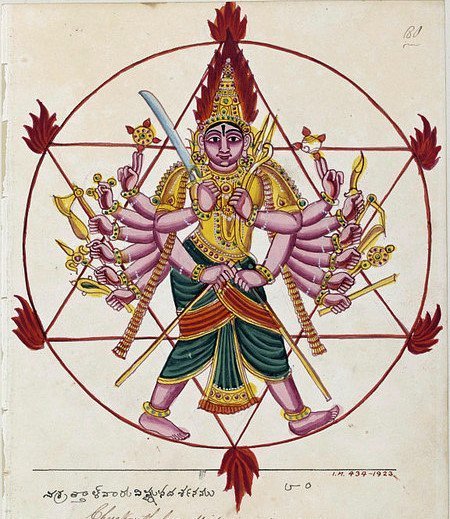
Maha Sudarshana Mantra
Om Shreem Hreem Kleem Krishnaaya Govindaaya Gopeejana Vallabhaya Paraya Param Purushaaya Paramathman Para Karma Manthtra Yanthra Tanthra Oushadha Visha Aabichara Astra Shastra Samhara Samhara Mrithiyur Mochaya Mochaya Om Namo Bhagavathey Maha Sudarshanaya Om Preem Reem Rum Deepthrey Jwala Pareethaya Sarwa Digkchobhanakaraye Karaeya Hum Phat Para Bhrahmaney Param Jyothish Swaha Om Namo Bhagavathey Sudarshanaya Om Namo Bhagvathey Maha Sudarshanaya Maha Chakraya Maha Jwaalaya Sarva Roga Prashamanaya Karma Bandha Vimochanaya Paadaathimastha Paryanthan Vaada Janitha Rogaan Pitha Janitha Rogaan Shlesma Janitha Rogaan Daathusankalikoth Bhava Naanaa Vikaara Rogaan Nasaya Nasaya Prasamaya Prasamaya
The meaning of the mantra goes like this, “O Lord Krishna, you protect the universe, and you control it. You are the supreme power, and you are the beloved of the gopikas. Oh Lord, protect me from every evil power. You who has the entire world in his hands. You who holds the Sudarshana Chakra and destroys every injustice, I surrender myself to you.”
Vishnu´s hand with Sudarshana Chakra by Dhanu Andluri Sudarshana Chakra The Sudarshana Chakra (सुदर्शन चक्र) is a spinning, disk-like weapon literally meaning "disk of auspicious vision," having 108 serrated edges used by the Hindu god [Vishnu]. The Sudarshana Chakra is generally portrayed on the right rear hand of the four hands of Vishnu, who also holds a shankha (conch shell), [Gada] (mace) and a padma (lotus). While in the Rigveda the Chakra was "[Vishnu]'s" symbol as the wheel of time, by the late period Sudarshana Chakra emerged as an ayudhapurusha (anthropomorphic form), as a fierce form of Vishnu, used for the destruction of an enemy. In Tamil, the Sudarshana Chakra is also known as Chakkrath Azhwar (translated as Ring/Circlet of God).
22 notes
·
View notes
Text
Destruction of Daksha Yagna
Destruction of Daksha Yagna explores the repercussions of ego and the wrath of the divine. This story explains the greatness of Lord Shiva and how unrighteousness is always punished. People who mock Lord Shiva as dirty or uncivilized don't understand his glory. Most people know this story but many don't know why Lord Vishnu had to fight for Daksha. I have also gathered background for this. Let us remember the story of Destruction of Daksha yagna.
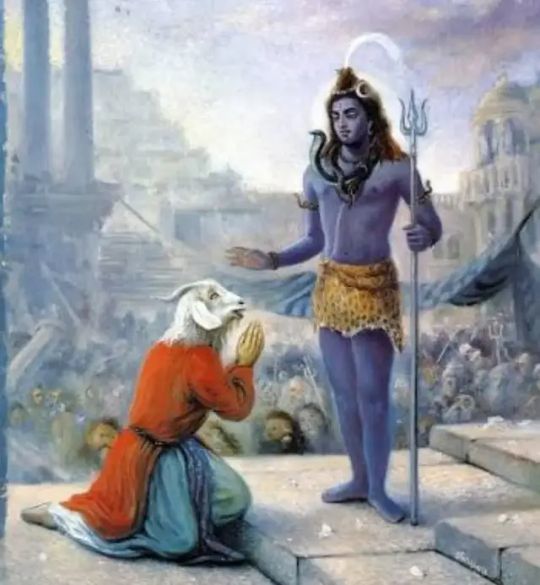
The Daksha Yagna was a grand ritual organized by Daksha Prajapati, the father of Sati, the first wife of Lord Shiva. Daksha, driven by his inflated ego, invited all the gods and goddesses to his grand ceremony, excluding Lord Shiva, whom he held in disdain. This omission set in motion a chain of events that would shake the cosmos.
When confronted by Sati about Her husband’s absence, Daksha had openly ridiculed Shiva as an uncouth, ill- deserving and uncivilised personality. Devi Sati could not take the insults about Her husband and thus produced Yogic Fire and ended Herself. As Nandi informed Lord Shiva of the tragedy, the latter threw a few of His hairs against a mountain in a heightened rage and the energy created thus broke the mountain into two parts; one half of it produced Virabhadra and another Bhadrakali whom Shiva instructed for the destruction of Daksha Yagna, Daksha and whoever else attended the Yagna too. Virabhadra appeared at the site of the Yagna instantly along with a huge army of Shivaganas including Dakini, Bhairava and Kapalini while Bhadrakali entered the Place with the nine incarnations of Bhagavati like Katatyani. As Daksha got terrified of the consequences of the situation, he took refuge at Maha Vishnu who expressed His helplessness and reprimanded Daksha for his foolishness in provoking his own daughter to take away Her life. Lord Vishnu Himself attended the Daksha Yagna and several Devatas too. Vishnu had to fight Virabhadra and his army. It was rather ironical that this happened. A celestial voice confirmed that Virabhadra was invincible but meanwhile several Devas too were killed and Lord Vishnu too desisted from the battle. Virabhadra severed Daksha’s head and threw it in the ‘Agnikunda’ (Fire pit) and returned to Rudra Deva. The irony of Lord Vishnu’s fighting Virabhadra to defend Himself and the Devas many of whom were all killed and He himself had to be defensive had a background; indeed Lord Vishnu was aware of this. A King called Kushva and Sage Dadhichi were good friends earlier but the ego (Ahamkara) of each other turned out to be mighty enemies. Kushva prayed to Lord Vishnu and Dadhichi looked to Lord Shiva for help. Lord Vishnu was pleased with Kushva’s penance and agreed to punish Sage Dadhichi and even used Sudarshana Chakra which proved futile, as Dadhichi was fortified with several years of devotion and Sacrifice along with constant ‘Japa’ (meditation) of Mritunjaya Mantra under the guidance of Sukracharya. Finally, Dadhichi condoned Kushva but did not excuse Lord Vishnu and his Deities and gave the curse that they would all be turned as ash in a fight with Lord Shiva’s part- incarnation (Virabhadra). Eventually, Lord Brahma approached Maha Deva to pardon and revive the lives of Lord Vishnu and Devas who were burnt in the battle with Virabhadra. A sobered and ever merciful Shiva conceded to the prayers of Brahma that not only Lord Vishnu be pardoned but those Devas who were burnt off in the cross fire with Virabhadra be revived but also allow a revitalized Daksha Prajapati with life by placing the Yagna’s Goat- head on to Daksha’s severed head thrown out by Virabhadra in the Fire pit and thus Daksha had a Goat- head thereafter. The ever grateful Daksha begged of Maha Deva for his pardon and prayed to Him with great sincerity and devotion everafter. He then performed a Yagna again with Maha Deva on the High Seat and with all the Devas to receive their blessings!
Neither Lord Shiva was able to save Raavana Nor Lord Vishnu was able to save Daksha even though they were great devotees. The important thing here is to understand that Dharma is of paramount importance. No God will save the wicked.
Har Har Mahadev 🙏🙏
7 notes
·
View notes
Text

-Siddhidatri
Ninth form of the Goddess Durga, Siddhidatri is worshiped on the ninth day of Navratri. She is Goddess of all eight siddhis and is worshipped by all Yogis, Sadhakas, Siddhas and Rishis-Munis.Siddhi means supernatural power or meditative ability, and Dhatri means giver. She fulfills all the divine aspirations and completes the mundane. She holds a lotus, mace, Sudarshana Chakra and shankha. In this form Durga removes ignorance and she provides the knowledge to realize that or Brahman. She is surrounded by Siddhas, Gandharvas, Yakshas, Devas (Gods) and Asura (Demons) worship her. The Siddhi that she provides is the realization that only she exists. She is the mistress of all achievements and perfections. Amazing Fact: She is served among the eight supernatural powers or the siddhis named Anima, Mahima, Garima, Laghima, Prapti, Prakambya, Ishitva and Vashitva. Anima means to reduce one’s body even the size of an atom; Mahima means to expand one’s body to an infinitely large size; Garima means almost becoming infinitely heavy; Laghima means becoming almost weightless; Prapti means having unrestricted access to all places; Prakambya means to realize whatever one desire; Ishitva means to possess absolute lordship and Vashitva is the power to subjugate all. Lord Shiva was blessed by Siddhidatri by being given by all the eight powers, they were requested and required to run the creation in his Ardhanareshwar form of half Shiva and half Shakti.
credit
@zeherili-ankhein @no-idea-where-i-am-lost @randomx123
don't kill me pt -3?? this one was a little better but still late
10 notes
·
View notes
Text

☀ Sri Sudarshana Chakra ॐ ☀
"O Sudarshana wheel, most favorite of Acyuta, the Supreme Personality of Godhead, you have thousands of spokes. O master of the material world, destroyer of all weapons, original vision of the Personality of Godhead, I offer my respectful obeisances unto you."~Srimad-Bhagavatam 9.5.4
17 notes
·
View notes
Photo



Habla Malón! que novelas? que Proceda ya...! Love que fue? Mañana lo es todo! a por ellos! que salgan las Checas del Closet! hablaos! y ya sabes Bandido que rote el Carty! 02/03/23
#Now or ever#Sudarshana#power pop#Pop punk#punk rock#Paroximia#skate punk#Cholo Visceral#Lesion#Pax#Reptil#techno#minimal techno#indie pop#Funky Night#La Katana funk#Radio Funk#Monarfunker#Hot Topic#cigarros pall mall#Ron Cartavio#cervezas y chicas#vans classics
0 notes
Text

Departed souls is not something to play with. *So please avoid spirit reading, soul healing, & other practices that invoke souls of dead.* Pls do understand that such practices can give some feeling of peace for few days, but brings major problems later, that is very tough to fix. Even in Tilak Havan, Narayana Bali, Sudarshana Havan, and other tantric procedures, ... any departed souls are invoked only in the presence of Strong Devata. So invoking souls of dead, without precautions is not advisable, irrespective of how much dear the person is to you.
8 notes
·
View notes
Text
Talk to astrologer
Astrology has been a popular form of divination for centuries, providing people with insight into their future, personality, and relationships. Astrologers have the unique ability to decode the language of the stars, interpreting the positions of celestial bodies at the time of a person's birth to gain a deeper understanding of their life. If you're looking for guidance and insights into your own life, talking to an astrologer can be a powerful experience.

One astrologer who has made a name for herself in the industry is Gleamingaura. With years of experience and a deep understanding of the science of astrology, Gleamingaura is a trusted and respected voice in the field. Whether you're looking for advice on your love life, career, or personal growth, she can provide you with the insights and guidance you need to navigate the complexities of your life with confidence call and talk to astrologer right now
At the core of Gleamingaura's approach is her belief that astrology is a tool for self-discovery. By looking at the unique positions of the stars and planets at the time of your birth, she can help you gain a deeper understanding of your strengths, weaknesses, and tendencies. This, in turn, can help you make more informed decisions about your life and relationships, leading to greater happiness and fulfillment.
One of the unique aspects of Gleamingaura's work is her ability to use astrology to help you find your life purpose. Many people struggle with finding meaning and purpose in their lives, and astrology can be a powerful tool for discovering what you're meant to do. By analyzing your chart, Gleamingaura can identify your natural talents and tendencies, helping you to see where your passions and skills might best be utilized.
Gleamingaura's consultations are also tailored to your specific needs and concerns. Whether you're looking for guidance on a specific issue or want a broader understanding of your life, she will work with you to develop a personalized plan of action. Whether you're seeking guidance on a relationship, your career, or your personal growth, she has the knowledge and expertise to provide you with the answers you're looking for.
In conclusion, talking to an astrologer like Gleamingaura can be a powerful and transformative experience. Whether you're seeking answers to specific questions or just looking for a deeper understanding of yourself and your place in the world, astrology can provide you with the insights and guidance you need to live a more fulfilling life. With Gleamingaura's expertise and compassion, you can be sure that you're in the best possible hands.
#rudra puja talks#purusha sukta#astrologer in bangalore near me#katyayini#sudarshana homa#mrityunjaya homam price#ask astrologer about marriage#pandit online bangalore#book pandit online bangalore#online pandit bangalore#pandit near me#online pandit near me#online pandit in bangalore#best astrologer in bangalore online#purush shukt#name numerology for business#business numerology#numerology for business#indian astrology expert#online jyotish for marriage#numerology shop name#business name numerology#numerology name for business#numerology for company name#numerology company name#numerology business name#numerology for business name#company name numerology#numerology for business names calculator#puja service
13 notes
·
View notes
Text
Maha Sudarshan Yantra

Maha Sudarshan Yantra: Revealing the Divine Shield Introduction The Maha Sudarshan Yantra is more than just an exquisite geometric design engraved into copper; it is a portal to cosmic forces and spiritual protection. Let us explore the magical universe of this precious talisman.
What Is The Maha Sudarshan Yantra? The Maha Sudarshan Yantra is a religious diagram depicting Lord Vishnu's Sudarshana Chakra, or cosmic wheel. This chakra, a heavenly weapon, is supposed to spin at breakneck speed, annihilating negativity, bad energies, and impediments in its path. The Yantra acts as a conduit for bringing holy energy into our life.
Symbolism and Significance The Maha Sudarshan Yantra protects against malicious forces, mental assaults, and bad wishes. It surrounds the devotee in a protective aura, keeping them secure from harm. Obstacle Removal: The Yantra, like Lord Vishnu's Sudarshana Chakra, removes impediments from our path in life. It removes obstacles, both physical and metaphysical, allowing us to go unfettered.
Healing: The Yantra's vibrations match cosmic frequencies, providing physical and mental healing. It cleanses our energy centers (chakras) and restores equilibrium. Spiritual Evolution: By meditating on the Yantra, one can get spiritual insights, strengthen their connection to the divine, and speed up their spiritual path.
Craftmanship and Material The Maha Sudarshan Yantra is expertly made from high-quality copper. Here's why copper was chosen.
Copper carries energy efficiently, therefore the Yantra effectively channels heavenly vibrations. Purity: Copper's purity represents spiritual clarity and openness. It resonates at higher frequencies. Durability: The thick copper assures long-term use, allowing future generations to benefit from its power.
Energization and blessing. Before reaching your hands, the Yantra goes through a holy process:
Blessing: Spiritual practitioners use heavenly forces to bless the Yantra, imbuing it with their desire. Energisation: Mantras and rituals charge the Yantra, revealing its hidden power. How to Use the Maha Sudarshan Yantra? Placement: Hang the Yantra in your house, puja area, or workplace. The northeastern corner is good. Meditation: Focus on the Yantra's exquisite geometry. Visualize the Sudarshana Chakra rotating and cleansing your surroundings. Chanting: Recite the Sudarshana Mantra for increased power. Om Sudarshanaya Vidmahe Maha Jwalaya Dhimahi Tanno Chakra Prachodaya.
Where to Buy Several reputable sources offer the Maha Sudarshan Yantra:
Amazon: You can find the 3 inches x 3 inches Yantra blessed and energized by Vishaka Arts for ₹625. Dharmsaar Shop: They offer a pure copper (Tamba) Yantra online at a 20% discount, enhancing attentiveness.
#Buy premium quality copper Maha Sudarshan Yantra#Pure Copper Maha Sudarshan Yantra#Pocket Tamba Yantra to Increase Attentiveness#maha sudarshan yantra benefits#Benifit premium quality copper Maha Sudarshan Yantra#Sudarshan chakra yantra benefits#sudarshan yantra benefits#sudarshana yantra benefits#shri sudarshan yantra#sri sudarshana yantra
0 notes
Text
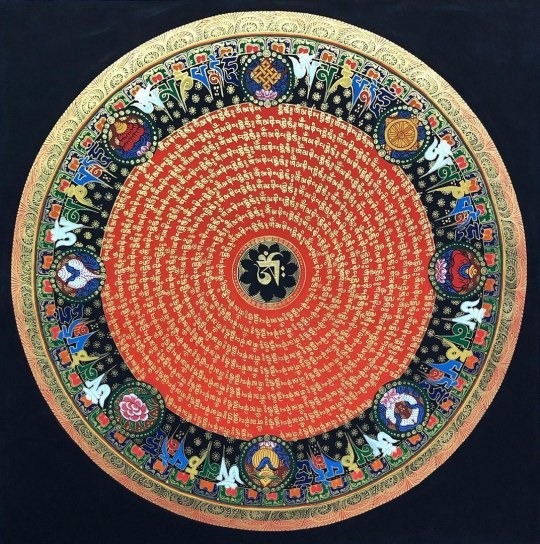
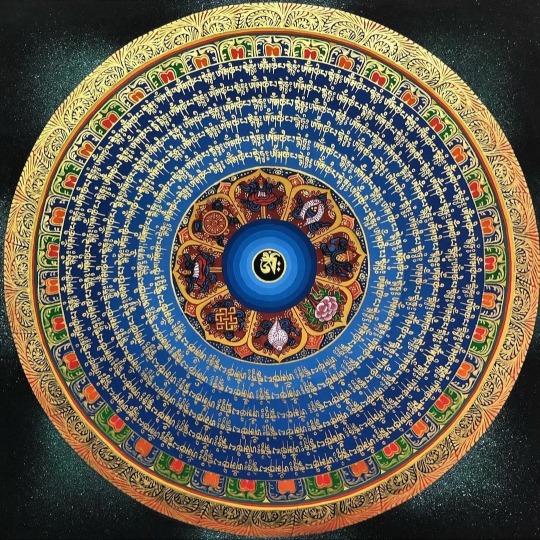
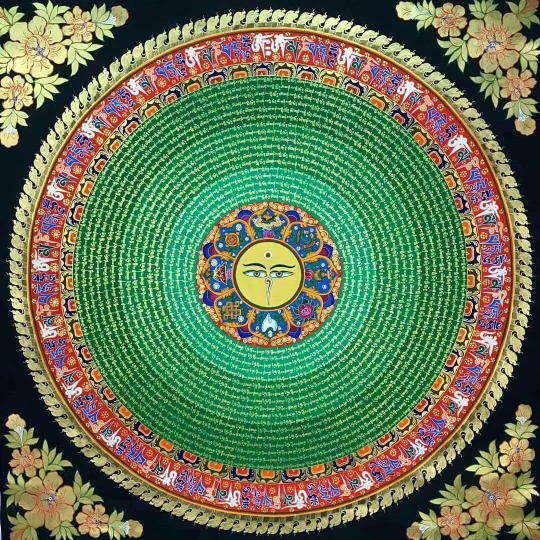

Ashtamangala Mandalas
Ashtamangala - Eight Auspicious Symbols (ashta meaning eight and mangala meaning auspicious; Sanskrit अष्टमंगल Aṣṭamaṅgala):
The Endless Knot
The Treasure Vase
The Lotus Flower
Two Golden Fish
The Parasol
The Conch Shell
The Dharma Wheel
The Banner of Victory
"A suite of eight auspicious symbols revered for their sacredness in Hinduism, Jainism, Sikhism, and Buddhism. Originally they were used in India at ceremonies and coronations for a king, but over time they’ve become embedded within varying cultures, often seen as common motifs in households and in art.
The White Conch Shell represents the pervasive sound of dharma and is said to awaken disciples from the deep slumber of sleep that is veiled in ignorance, urging us to seek our own welfare and the welfare of others. In Buddhism, it represents the voice of Buddha and his sacred teachings, and in Indian epic literature, it is the hero’s trumpet. In Hinduism, the conch shell is a symbol of the Sudarshana Chakra.
The Endless Knot was originally a symbol of love, and it represents the ultimate unity within everything. The endless knot also symbolizes the great spirit of the Buddha, the interdependence of all things, as well as, enlightenment that arises from the union of compassion and wisdom.
The Two Goldfish originally represented two sacred rivers of India; the Ganges, and Yamuna, and is associated with the lunar and solar channels, said to originate in the nostrils, carrying alternating rhythms of breath and prana. In Buddhism, they represent the vision of the Buddha, as well as, aiding those along the spiritual path towards liberation without drowning in samsara.
The Lotus Flower symbolizes divine beauty and primordial purity, for its ability to float above muddy water, free from attachments and desires. Buddhas and Bodhisattvas are often represented sitting on lotus flowers, symbolizing divine language and the purification of the body, word, and spirit. Today, the lotus flower is mostly known for symbolizing the opening of our energy centers aka; chakras.
The Jewelled Parasol was originally an attribute of royalty in India, and in Buddhism it represents the head of the Buddha, offering protection against material and spiritual dangers such as illnesses, harmful forces, and the elements of the aether. It can also represent the canopy of heaven, the expansive firmament of the sky, and the unfolding of space.
The Treasure Vase represents material ease or prosperity in wealth, health or longevity, and spiritual benefits. In Buddhism, it represents the neck of the Buddha and his unlimited ability to teach the dharma, which never lessons or loses its value over time. In Vajrayāna anointing ceremonies it is the container of wisdom and can represent the vastness of space.
The Victory Banner represents the body of the Buddha and his victory over the four māras, or hindrances in the path of enlightenment… pride, desire, disturbing emotions, and the fear of death. In Tibetan Buddhism, there are eleven different forms of the banner, which represent eleven different methods for combating negative forces.
The Dharmachakra or “Wheel of the Law” is the most well know symbol throughout Buddhism, historically symbolizing a lunar or solar chariot, driven by royalty, called a Chakravartin. A Chakravartin is the one whose wheels turn without barriers, and as such, is a master of both land and sea aka; physical reality and akashic waters.
Meditation and contemplation upon these eight auspicious symbols is said to have the ability to bring us closer to understanding the divine nature of the Buddha and the divinity within each of us waiting to be self-realized."
© Written by Carrie Love
35 notes
·
View notes